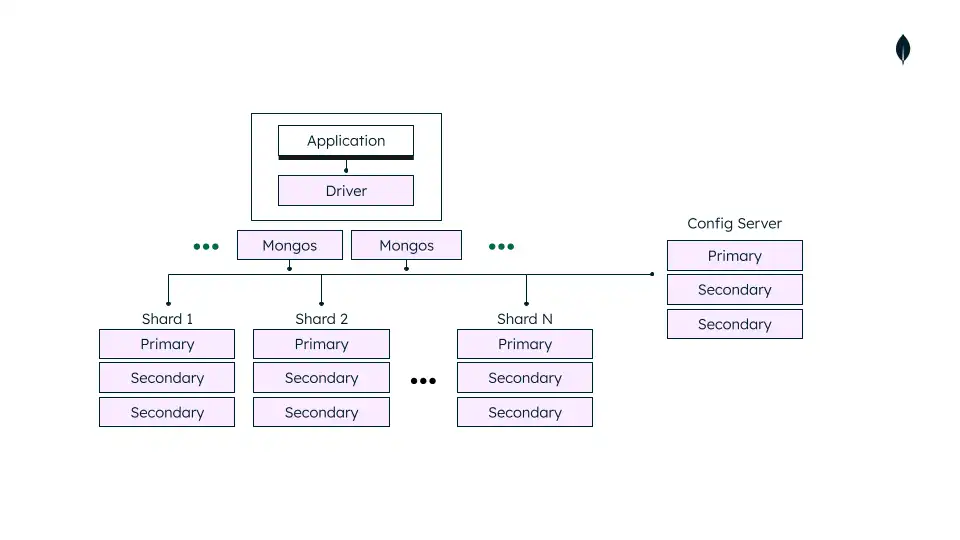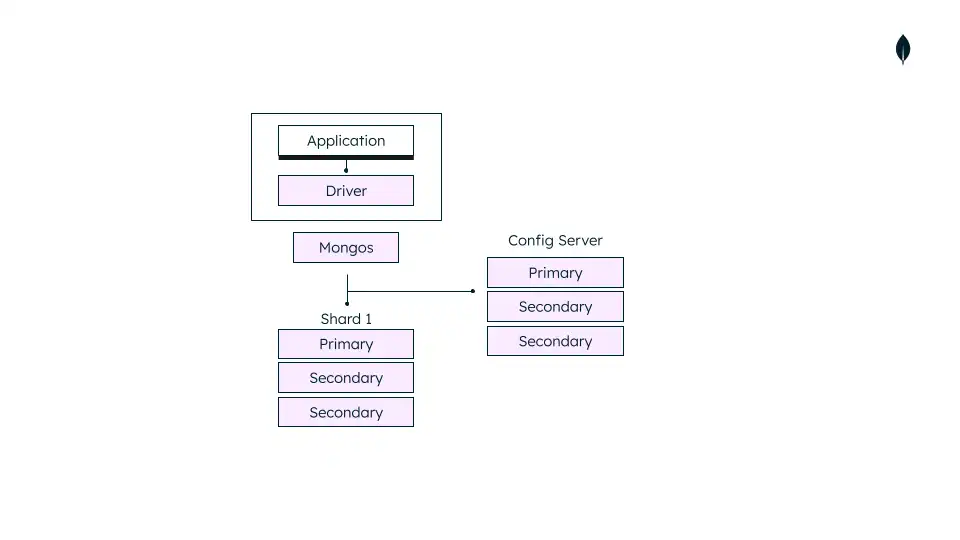A MongoDB sharded cluster consists of the following components:
shard: Each shard contains a subset of the sharded data. Each shard must be deployed as a replica set.
Routing with mongos: The
mongosacts as a query router, providing an interface between client applications and the sharded cluster.config servers: Config servers store metadata and configuration settings for the cluster. Config servers must be deployed as a replica set (CSRS).
Production Configuration
In a production cluster, ensure that data is redundant and that your systems are highly available. Consider the following for a production sharded cluster deployment:
Deploy Config Servers as a 3 member replica set
Deploy each Shard as a 3 member replica set
Deploy one or more
mongosrouters
Replica Set Distribution
For production deployments, we recommend deplying config server and shard replica sets on at least three data centers. This configuration provides high availability in case a single data center goes down.
Number of Shards
Sharding requires at least two shards to distribute sharded data. Single shard sharded clusters may be useful if you plan on enabling sharding in the near future, but do not need to at the time of deployment.
Number of mongos and Distribution
mongos routers support high availability and scalability
when deploying multiple mongos instances. If a proxy or load
balancer is between the application and the mongos routers, you
must configure it for client affinity. Client affinity allows
every connection from a single client to reach the same mongos.
For shard-level high availability, either:
Add
mongosinstances on the same hardware wheremongodinstances are already running.Embed
mongosrouters on the same hardware where the application is hosted.
mongos routers communicate frequently with your config
servers. As you increase the number of routers, performance may degrade.
If performance degrades, reduce the number of routers.
The following diagram shows a common sharded cluster architecture used in production:

Development Configuration
For testing and development, you can deploy a sharded cluster with a minimum number of components. These non-production clusters have the following components:
One
mongosinstance.A single shard replica set.
A replica set config server.
The following diagram shows a sharded cluster architecture used for development only:

Warning
Use the test cluster architecture for testing and development only.